Over the sixteen years (and counting) of New Who, many monsters have terrorised our screens, alongside some more sympathetic ones. Whichever end of the moral scale, there are lots of truly fascinating aliens to delve into. Aside from classic foes such as the Daleks and Cybermen, we’re all familiar with some newer creations; the ever-creepy Weeping Angels, the imposing Silence, the spooky Gas Mask Zombies, and the amusing yet threatening Judoon, to name a few. These are all rightfully successful monsters for various reasons, with a lasting impact on fans—I’m sure I’m not alone in still glaring at stone statues with suspicion. But there’s great value in the aliens who have often slipped under the radar. Most are one-episode wonders, all are underestimated in certain ways. I’m here to stand as the earthly defender of these worthy monsters.
Reapers (‘Father’s Day’, Series 1)
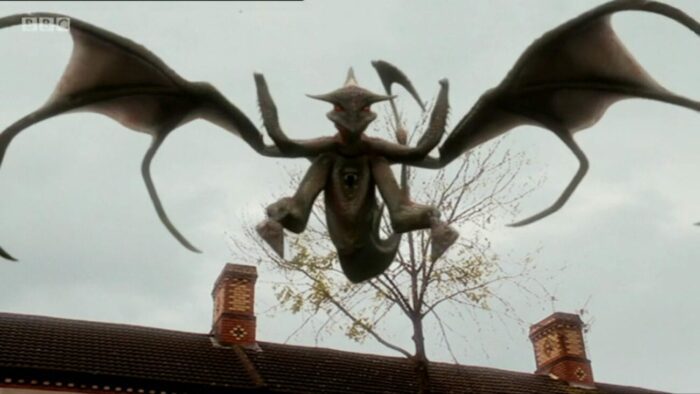
“Don’t fear the Reapers” is a sentiment that wouldn’t exactly apply here. These gargoyle-like creatures with glowing red eyes and scythe-shaped tails seek out any temporal disturbances, such as time paradoxes, and rectify them by devouring everything in the area. The Doctor likens them to bacteria that sterilise a “wound in time”; in ‘Father’s Day’, this wound is a consequence of Rose saving her dad from dying in a hit-and-run accident in 1987. In the past, it’s said that the Time Lords used to fend off the Reapers and fix any damage to time, but with them gone, they descend on Earth mercilessly. Even the TARDIS is rendered obsolete by the Reapers. The only way they can be banished is by restoring the timeline to its previous events. Any memories of the Reapers are wiped after their departure, and any people they killed are brought back to life.
The design of the Reapers is menacing, with their skeletal features, scaly brown skin, and disturbingly-placed mouth in the middle of their chests. In a way, they almost feel like religious figures, angels of death who guard time and purge any living thing that threatens this status quo. Hovering up in the sky with their spiny wings and swooping down to pick off humans makes them feel all-seeing and all-powerful. The obvious nod to traditional depictions of Death with their scythe tails (and of course the name) is a nifty detail. It would be difficult to maintain the Reapers as a recurring enemy since the entire show involves meddling with events in time, but it’s a shame that the concept is only used in one episode.
The Werewolf (‘Tooth and Claw’, Series 2)
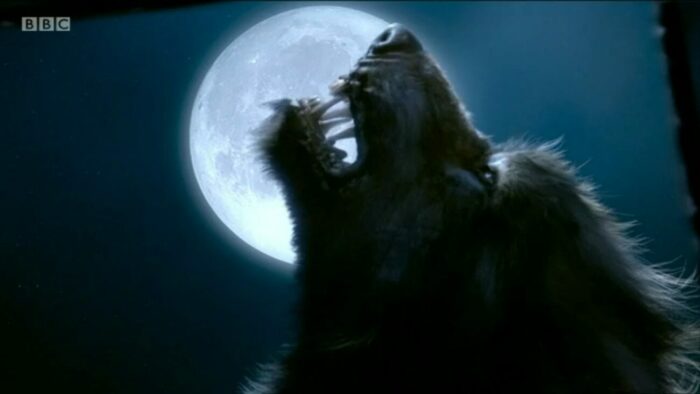
Sometimes it seems all too easily forgotten that there was an actual werewolf in Doctor Who! Like, full transformation, four-legged, big old hairy wolf! Described as a ‘Lupine Wavelength Haemovariform’, the werewolf is brought to Balmoral Castle by warrior monks in an attempt to infect Queen Victoria with lycanthropy in ‘Tooth and Claw’. Personally, I’d much prefer if they’d succeeded and converted the British Empire into the Empire of the Wolf. Before turning, the man is trapped in a metal cage, hooded and black-eyed. He’s already creepy, and we get the sense that he’s going to become something even more sinister—the pay-off certainly provides. Sure, the wolfy CGI is outdated looking back now, but it’s still “beautiful”, as the Doctor says.
The werewolf is huge, filling up the height and width of the dark corridors it chases people down, with slimy, sharp teeth and beady, threatening eyes. It mostly runs on its hind legs, and is hunched over to appear leering and poised to attack. Luckily for the people trapped in the estate, it was designed as a trap for the werewolf. Lesser-known werewolf lore of an allergy to mistletoe is included, as the walls of the library are coated with mistletoe oil to repel it. In the end, the werewolf is killed by a high concentration of moonlight, ironically the very thing that gives it its power. It’s quite tragic when such a magnificent creature dies, and it wasn’t the man’s fault that he got infected and forced to kill people due to his new nature, so there’s definitely a level of sympathy with the werewolf. Also, the implication that the royal family are all werewolves is pretty hilarious.
The Ood (‘The Impossible Planet’/’The Satan Pit’, Series 2; ‘Planet of the Ood’ and ‘The End of Time’, Series 4)
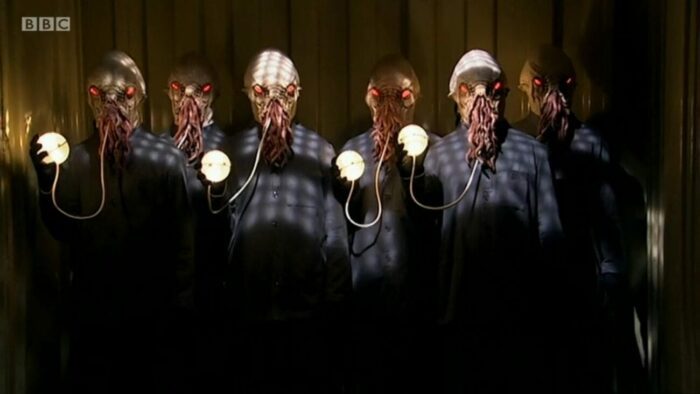
Although the Ood are well-known monsters, their infamy is usually linked to their strange appearance. The mince meat-looking mouths do leave an impression, but the genuine appeal lies in the kind and gentle nature of the Ood. When we first meet these telepathic humanoids in ‘The Impossible Planet’, they’re being exploited as servants to the crew of a sanctuary base. Due to their passive telepathy and nature as a hivemind, the Beast takes over and possesses all the Ood, turning them violently against the humans. Like the Reapers, the Ood’s eyes glow red, this time as a visual cue to indicate when they are telepathically active. Their next appearance in ‘Planet of the Ood’ takes the exploitation narrative further, as the creatures are being harvested and sold as servants. Further backstory is given, as we discover that the Ood are naturally born with a “hindbrain” in their hands which has been replaced with a translation sphere to make them subservient to humans. All Ood are also connected to a collective consciousness in the form of a giant brain.
The Ood are one of the most sympathetic alien species in Doctor Who. Emphasis is put on their peaceful nature, and this is contrasted with human malevolence, as the human race took advantage of their placation and used this for their own gain, at the expense of the Ood. It’s a devastating narrative, and one with an obvious political commentary. We don’t often get to see the Ood in their natural environment, outside of external influence; however, they do play a good role in ‘The End of Time’, warning the Doctor of his looming demise, and gently singing to him as he starts to regenerate. It’s a sweet moment, but I wish we got to see more of the Ood. They deserve to be happy!
Unknown Entity (‘Midnight’, Series 4)
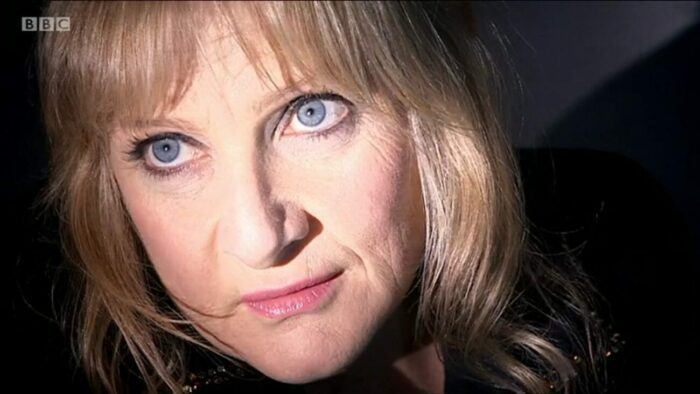
As I’ve mentioned in my recent article on ‘Midnight’, it’s one of the scariest episodes, and the unknown entity is definitely one of the scariest monsters, too. It leaves a lasting haunting feeling, but without a face to put to it, it can be easy to overlook this one-off appearance. Due to X-tonic rays, no living creature should be able to survive on the surface of the planet, but we all know there’s not really such a thing as ‘impossible’ in the Whoniverse. Soon enough, the entity manages to breach the barrier of the tour bus, possessing one of its inhabitants. It uses repetition of speech to accumulate knowledge and power. In the process, the creature manipulates the humans aboard into turning against one another and feeds off their escalating fear. Targeting the Doctor, the entity almost succeeds in killing him, making it all the more chilling.
We only see the creature via its possession of Sky, so there’s no telling what its true form looks like. The mechanic notices a shadow amidst the diamond surface of the planet before it enters the bus, but the audience never sees it. Fear of the unknown is instead used to make us really creeped out by the entity. Its psychological manipulation is a key factor too; it can’t be fought with physical combat if it’s inside your mind. Despite the entity’s effectiveness as a foe, I think it works best in a singular, self-contained episode. I don’t know about you, but I don’t think I’d really want to see it again. Besides, it’s assumed that the entity died when Sky got thrown out of the bus, but if it survived the radiation before, it most likely did again. Perhaps we’ll never know…
The Dream Lord (‘Amy’s Choice’, Series 5)
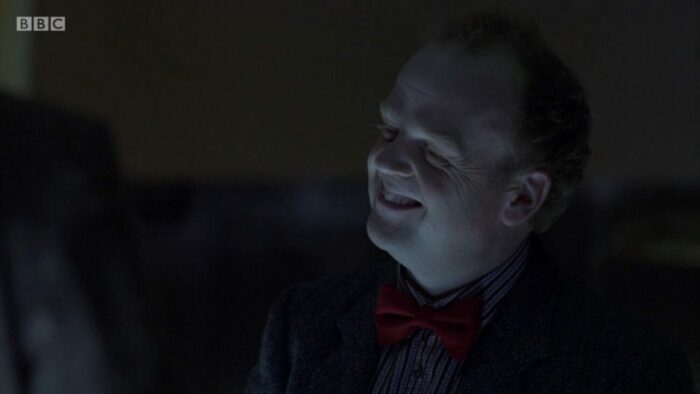
I suppose this is a bit of a cheat entry since the Dream Lord isn’t technically a monster, but rather a manifestation created from the Doctor’s own mind as a result of psychic pollen. No matter—it’s a fantastic concept that deserves attention, and involves a wonderful portrayal by Toby Jones. In ‘Amy’s Choice’, the Dream Lord traps the Doctor, Amy, and Rory in two different realities with impending danger, one of which he says is real, the other being false. They have to figure out which is which and die in the false world so they can awaken and fight the threat in the real world. It’s revealed at the end that the Dream Lord tricked them by fabricating both worlds so they were sleeping and slowly dying in the TARDIS in reality. The plot twist is effective, and fits in with the Dream Lord’s manipulative personality.
As well as being a compelling, trickster-type villain, the Dream Lord is a representation of the Doctor’s own darkness. He spawned from the Doctor’s mind, showing that he is capable of being malicious to that extent. In addition to that rather sinister aspect, the Dream Lord makes many deprecating comments towards the Doctor, and in figuring out who he is, the Doctor says “there’s only one person in the universe who hates me as much as you do”. Of course, he’s referring to his own self-loathing, which highlights a really quite sad aspect of the Dream Lord. He’s every negative part of the Doctor personified: his cynicism, self-hatred, arrogance, even selfishness. This is what makes him such a compelling monster, the fact that he’s essentially lying dormant inside our heroic protagonist. It clearly plagues the Doctor as well as the audience, as he catches the Dream Lord’s taunting face in his reflection at the end.
The Siren (‘The Curse of the Black Spot’, Series 6)
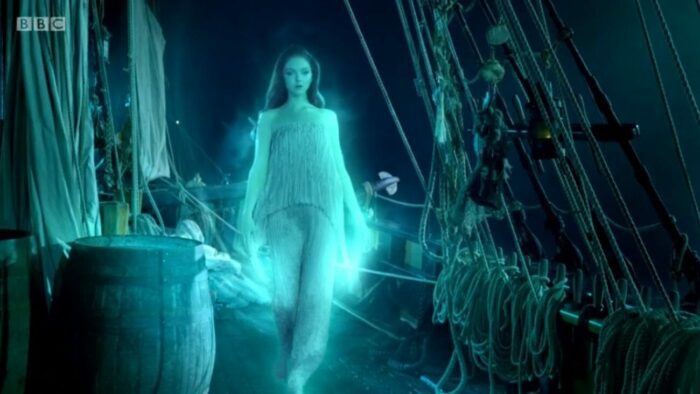
Mythological creatures are always interesting, and it’s fun to see how Doctor Who presents its interpretation. ‘The Curse of the Black Spot’ portrays a Siren, a creature from Greek mythology that lures sailors to their deaths with an enchanting song. Originally, the Sirens were half-bird, half-woman, but the bird part later changed to half-fish, transforming into the more familiar mermaid figure by the Middle Ages. However, the Siren in Doctor Who appears completely as a woman, only with an ability to float and blue-green glow around her. She’s described as a “virtual doctor” who worked on a spaceship from another dimension but ended up inhabiting the same space as the pirate ship ‘Fancy’ in 1699. Any crew member that was injured in any way, whether it be a fatal wound or a papercut, would be marked with a black spot before getting transported to the sick bay on the Siren’s spaceship when she arrived in person. Unable to cure their ailments due to being from a different planet, she kept her patients on life support.
Initially perceived to be a villain because of the way she marks and kidnaps the most physically vulnerable crew members, the Siren is actually a caring, nurturing figure. Portrayed by the ethereal Lily Cole, she is the very embodiment of an angelic being, prioritising the well-being of her patients. The only time she becomes threatening is if she feels her patients’ health is being compromised by someone, in which case she turns red and shrieks aggressively, and can even conjure fire for attack in these circumstances. Her use of reflective surfaces to travel between dimensions is also a neat feature that fits with the aquatic theme. At the end of the episode, the pirate Captain Avery takes over her spaceship and allows her to continue looking after his crew. Although this is quite sweet, part of me wishes she had been set free, or jumped to another ship in her dimension to care for people, but this way she can fulfill her duties and is no longer lost.
The Crooked Man (‘Hide’, Series 7)
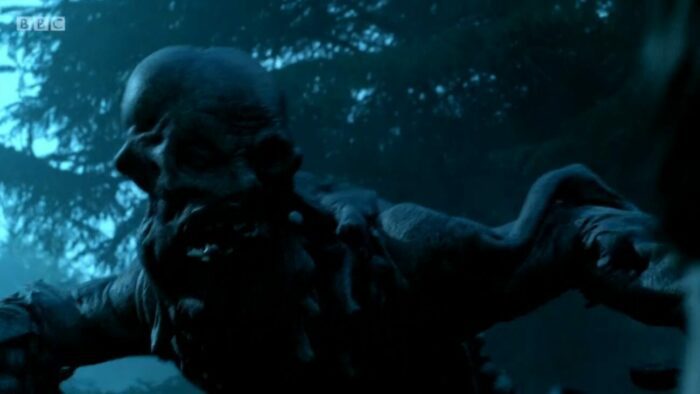
This twisted, tree-like monster is one of the more visually perturbing creatures of Doctor Who. It’s revealed as the focus of ‘Hide’ after the red herring of stereotypical ghost activity in a supposed haunted house in the 1970s. The ‘ghost’ is actually a time traveller called Hila Tacorien who was trapped in a pocket dimension where the Crooked Man is, but there’s a further twist—another of the Crooked Man’s species was in the haunted house, which got mistaken for some of the ghost activity. The monster was chasing Hila because it wanted to piggyback a ride to the Earth dimension so it could reunite with its mate. As the Doctor says, it’s not a “ghost story”, but rather a “love story”. The narrative itself is quite cheesy and feels a bit tacked onto the end of an episode that already involves multiple plot twists, but it’s still a nice conclusion.
The appearance of the Crooked Man heightens its status as a really spooky monster: its weathered, wrinkled skin, deformed limbs, hanging jaw, and jaunty movements. This is an intriguing contrast against the sentimentality of the creature’s narrative, playing off themes of loneliness and separation from a companion. If you haven’t picked up on this by now, I’m fond of sympathetic monsters that are suspected to be dangerous but are in fact harmless. Plus, monsters deserve love too!
Half-Face Man (‘Deep Breath’, Series 8)
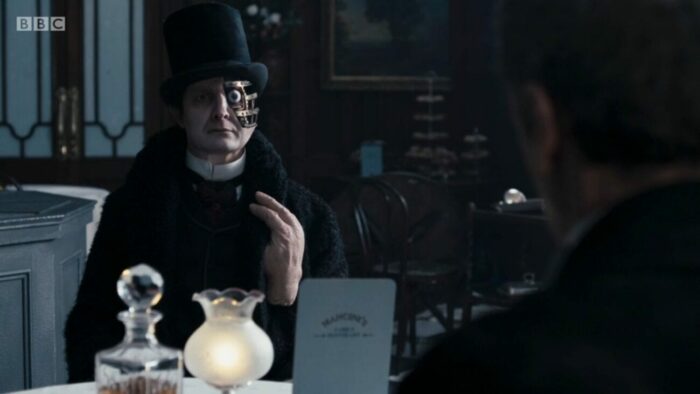
Most Doctor Who fans champion the Clockwork Droids from Series 2’s ‘The Girl in the Fireplace’ as memorable foes, but less so Series 8’s Half-Face Man. Among other Clockwork Droids, he found himself stranded on Earth as their ship (the sister ship of the SS Madame de Pompadour) crashed and was damaged beyond repair. To survive, the Half-Face Man and his fellow Droids harvested both mechanical and biological components to replace their faulty ones. Their ship was converted into a fake restaurant to use as a cover to harvest human organs from customers during the Victorian era. The Half-Face Man’s objective was to reach the ‘Promised Land’, which he technically does by entering Missy’s construction of Heaven after dying. It’s left ambiguous as to whether the Doctor killed him or he killed himself.
Having Clockwork Droids in the Victorian era played up to a steampunk aesthetic, which is always fun. The organ harvesting aspect of the Half-Face Man’s villainy (along with the other Droids) is particularly gruesome. Combining human skin and organs with mechanical features gives the Half-Face Man a frightening and distinctively different look to the original Clockwork Droids. The concept of the Droids having spent so many years replacing their parts also brings up the philosophical question of whether it’s the same person if they no longer have any of their original parts. As the Doctor puts it:
You take a broom, you replace the handle, and then later you replace the brush, and you do that over and over again. Is it still the same broom? Answer? No, of course it isn’t.
The Half-Face Man was so desperate to survive and reach somewhere organically unattainable that he lost himself along the way. Again, there’s a tragic aspect to his character. It’s understandable that this spin on the original Clockwork Droids didn’t garner much attention since the Doctor’s recent regeneration took up most of the focus, but it’s a worthy mention.
Sandmen (‘Sleep No More’, Series 9)
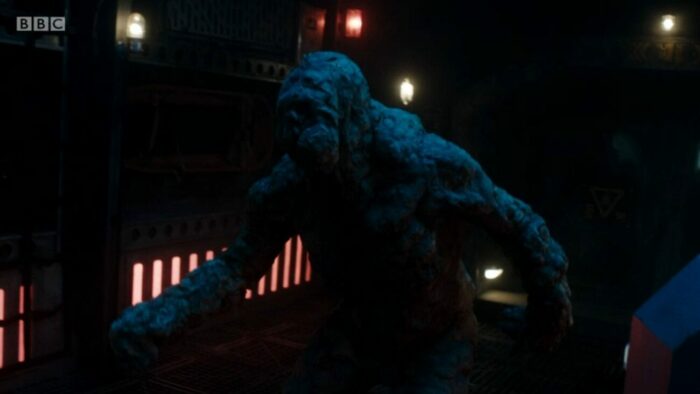
In the 38th century, a researcher called Rassmussen invents Morpheus, sleep pods that allow humans to compress a month’s worth of sleep into a few minutes. A handy bit of tech, no doubt—until it ends up creating carnivorous monsters. Turns out the sleep dust gathered in the corner of people’s eyes as they sleep transformed into the Sandmen, which digested the crew of the space station. Once let loose, they absorb more victims by reaching out their limbs and drawing them into their body. Although the ship crashes into Neptune and the Sandmen are pulled apart by the planet’s gravity, it’s revealed that glitches in the found footage edited by Rassmussen contains the Morpheus signal, allowing the monsters to spawn from the sleep dust of any humans watching.
Malicious creatures being born out of parts of humans is a worrying concept, since no one is immune. Additionally, the idea of monsters attacking in your sleep is even more horrifying, as humans can’t evade sleep, and it’s a time when we are most vulnerable, therefore unable to defend ourselves against an attack. The Sandmen are also blind, relying on hearing to hunt their prey. Although this may seem like an easy weakness to take advantage of, it means anyone being chased by the monsters would have to stop screaming or moving, which heightens the tension and fear. Lumpy, humanoid creatures with giant, gaping mouths, the Sandmen look repulsive, and the fact that they’re made out of sleep dust is all the more disgusting. It would be nice to see another appearance from them one day!
Thijarians (‘Demons of the Punjab’, Series 11)
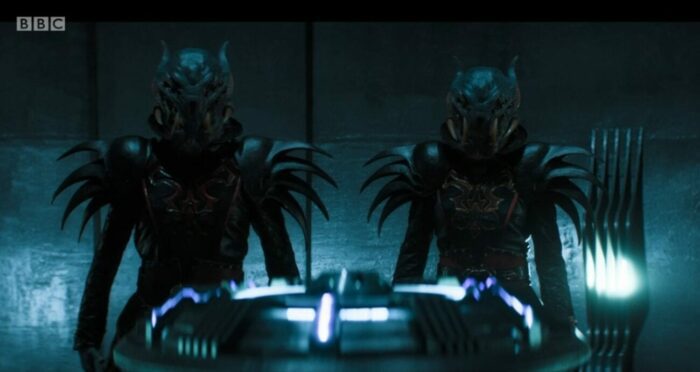
Another example of aliens that are assumed to be killers, but are in fact here to help, are the Thijarians, seen in Series 11’s ‘Demons of the Punjab’ (reviewed by Rachel Stewart). The Thijarians are renowned throughout the universe for being a race of assassins, as the Doctor identifies, so they are assumed to have killed the holy man. However, this turns out not to be the case, as the creatures explain to the Doctor that they once returned to their home planet to find it had been destroyed, and the rest of their species killed. They have since changed their ways, deciding to bear witness across time and space to those who would have otherwise died alone. The reason why they’re in India in 1947 is to await the casualties of the Partition of India. It’s a devastating yet heart-warming backstory, and shows that even aliens that are killers by nature aren’t forced to live that way forever.
Visually, the Thijarians are extremely sleek and pleasing to look at; they have metallic heads, tusks, and seven eyes on each side, adorned in long, black leather outfits with red embellishments. They can only speak telepathically, which could cause great pain to the person they’re communicating with, but only if they choose it. Similar to the Crooked Man, the Thijarians’ appearance as tall, imposing monsters is in contrast to their newfound objective to provide peace and companionship to the dying. It’s a very sweet concept.
These are only a few of many impactful New Who monsters, but I’ll be discussing more underrated ones in Part 2—don’t miss it!

